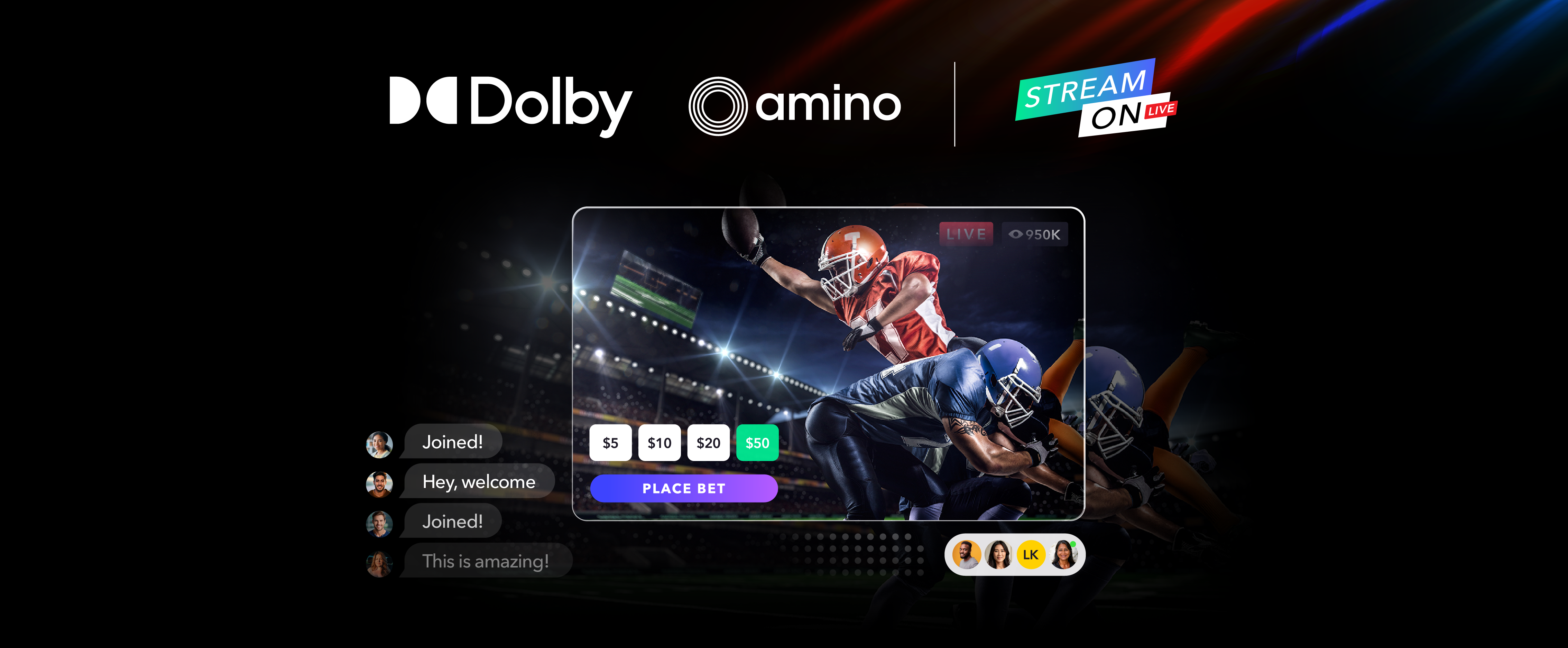Latency—it’s the hidden challenge of modern live sports streaming. Imagine watching your favorite team score the winning goal, but seeing social media explode with the news seconds before you witness it, or worse, losing a bet because the odds shifted before your screen caught up with the live game. For sports broadcasters and engineers, latency is a critical factor but deciding between ultra-low latency and consistent, yet slightly higher latency depends entirely on your application.
Is ultra-low latency always necessary for live sports? Or is the focus on scalable, consistent latency the right approach? This guide lays out the considerations to help you make the most informed decision for your use case.
Is ultra-low latency really that important?
In 2025, streaming with ultra-low latency is incredibly fast, delivering sub-500ms response times regardless of device or location, making real-time interactions feel instantaneous. For certain scenarios like real-time sports betting or highly interactive fan experiences, ultra-low latency is certainly indispensable, as even a fraction of a second can make all the difference.
However, not all live sports broadcasts benefit equally from ultra-low latency. Massive events, such as the Super Bowl or World Cup, often face the challenge of millions of simultaneous viewers. For these scenarios, reducing every millisecond of delay might not bring significant business value compared to the effort required.
Yet, with the rise of second screens, where fans follow live stats, apps, or social media feeds with much lower latency, discrepancies become frustrating. As someone who enjoys sports watch parties with family, no matter where we are, I can absolutely relate to how irritating this can be. When TV broadcasts lag by as much as 30 to 45 seconds, the out-of-sync experience can alienate viewers, highlighting the need for improvements.
Broadcasters are undoubtedly under increasing pressure to tackle latency issues, highlighting an urgent need for financially viable solutions. Nowhere is this challenge more evident than in live sports streaming, where latency has sparked intense debate amid growing demands from fans for seamless synchronization across TV broadcasts, apps, and second screens.
While that may be the case, the truth is that while ultra-low latency or real-time streaming certainly have their place in live sports, it’s far from the one-size-fits-all solution many assume.

Why consistent latency is critical
Rather than focusing solely on the lowest latency possible, broadcasters should pause to identify if they should instead prioritize consistent latency across devices and platforms. With stream expectations being what they are today, viewer synchronization is essential for creating a unified fan experience. Here’s why consistent latency matters:
Sports fan satisfaction: Viewers crave a smooth, consistent high-quality stream.
Fans watching live sports on their TVs, mobile devices, or social media expect to see the same action at almost the same time. Excessive time gaps between platforms ruin the viewing experience. Imagine seeing the game-winning goal on Twitter before it even appears on your streaming app.
Social engagement: Consistent latency fosters real-time community interaction.
It ensures fans can celebrate, debate, and engage with each other in sync, bolstering overall fan engagement and keeps them fully engaged from start to finish.
Synchronized latency: Scalable and reliable streaming for global sports fans.
For large broadcasts with millions of viewers, maintaining synchronized streams at a configurable high latency ensures a premium playback experience, no matter the screen or platform.
Personalized viewer experiences: Creating immersive, interactive streams.
Unlike traditional advertising, live sports provide a dynamic environment where the action unfolds unpredictably. Consistent 5-10s latency or real-time streaming lays the foundation for personalized, immersive viewing. It powers fan interactivity, real-time stats and Server-Guided Ad Insertion (SGAI), ensuring ads and highlights enhance, not disrupt, the live stream experience.
Take this scenario: A star player just scores an incredible goal, and within seconds, an ad for that player’s discounted jersey appears on-screen or in a companion app. This would not be possible with long delays of 30-45s. Inconsistent streaming delays shatter the sense of immediacy, disconnecting fans and preventing them from feeling like they’re part of the live action.
The takeaway is clear: consistent latency builds fan trust and loyalty, keeping audiences coming back for more. It helps a business differentiate itself in the competitive world of live sports by delivering reliable, high-quality streams that fans and advertisers can count on.
When do you need real-time streaming?
Although consistent latency often takes center stage, there are specific use cases that demand real-time streaming. One of the most prominent is live sports betting.
Real-time streaming provides a critical edge in fast-paced, high-stakes environments like in-play betting. With sub-500ms latency, the delay between live game events and their on-screen display is minimized, enabling sportsbooks to provide a more thrilling sports betting experience.
Additional benefits include:
- Extended betting windows: Bettors can place bets up until the last possible moment, capturing more engagement and revenue.
- Instant odds refresh: Odds dynamically update based on real-time action, keeping fans engaged and informed.
An example of where real-time streaming is non-negotiable is in live horse racing, where odds can shift within fractions of a second. Without real-time streaming, a delay could leave sports bettors frustrated when their stakes become invalid because the race started before their placement was registered.

A good streaming solution for live sports betting leverages configurable latency, offering an alternative to sub-500 ms real-time streaming when needed. This approach ensures consistent ultra-low latency to maintain the excitement of real-time action, while a minimal delay of one or two seconds keeps odds information perfectly synchronized with the video stream.
Latency delays in live sports betting, whether in horse racing or a cricket match, can leave users feeling frustrated and disconnected from the action, ruining the excitement of the betting experience and potentially discouraging them from returning to the platform. When considering a latency strategy, the ROI for sportsbooks offering real-time streaming is substantial, making ultra-low latency well worth the investment.
Live sports broadcasts and configurable latency
Large broadcast sporting events, especially those on OTT platforms or cable television, rarely benefit from real-time streaming. High-quality streaming to millions of viewers favors configurable and consistent latency for the following reasons:
- Scalability: Large-scale events like the Super Bowl or Olympics involve millions of viewers. Slightly higher, consistent latency helps distribute streaming resources evenly around the world, maintaining quality at scale.
- Broadcast compliance: Many live broadcasts implement a delay (typically 5–10 seconds) to ensure inappropriate content, like foul language or unexpected incidents, does not reach viewers.
- Buffering safeguards: Configurable latency minimizes the risk of stream disruptions, offering broadcasters the quality assurance needed during large events.
For broadcasters streaming to millions of viewers, consistent higher latency doesn’t just make sense—it’s essential. By focusing on consistent, flexible delays, broadcasters can meet the needs of a wide range of viewers while avoiding unnecessary costs.
However, live sports broadcasters should strive for a latency closer to 5–10 seconds, providing enough delay to ensure a high-quality stream while minimizing the frustration of fans who are also watching or interacting on a second screen.

Technology that allows you to choose
The beauty of live streaming today is flexibility. Solutions like those offered by Dolby enable broadcasters to configure latency according to their event requirements.
For real-time interaction: Ultra-low latency under 0.5 seconds for instant viewer engagement and in-play sports betting.
For scalable broadcasting: Selectable, consistent latency for seamless delivery to millions of viewers, ensuring everyone shares the same experience.
Dolby offers a robust suite of streaming solutions designed to empower live sports operators with the flexibility to select their preferred latency, whether aiming for ultra-low latency for real-time engagement or slightly higher latency for optimized buffering and stream stability. Leveraging advanced encoding and video delivery technologies, Dolby ensures that regardless of the chosen latency, operators can deliver a consistent and reliable viewing experience for global audiences.
This consistency, powered by the Dolby player, is paired with exceptional audio-visual quality and seamless playback across a diverse range of platforms, from mobile devices to smart TVs, ensuring every fan, no matter what device they use, enjoys an immersive and uninterrupted live sports experience.
The rapid advancement in streaming technology has certainly transformed how fans experience live sports, thus shifting their expectations for live sports. But achieving the best results hinges on understanding when to prioritize real-time streaming and when consistent, configurable latency will suffice.
We at Dolby recognize how vital it is to tailor latency levels to the unique requirements of your live event, ensuring optimal viewer satisfaction and cost efficiency.
Conclusion
For high-stakes interactions like live sports betting, real-time streaming is invaluable. But for general broadcasting at scale, focusing on consistent latency ensures a smooth, unified viewing experience for a diverse audience.
Whether your goal is to engage bettors, entertain millions, or optimize resource allocation, technology like Dolby’s configurable solutions can help you deliver the perfect latency every time.







